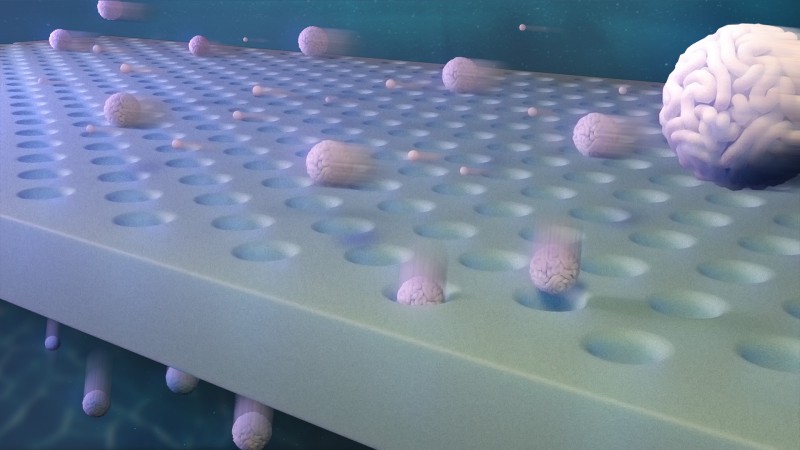Sharp separation using isoporous membranes
Imagine a close basketball game that comes down to the final shot. The probability of the ball going through the hoop might be fairly low, but it would dramatically increase if the player were afforded the opportunity to shoot it over and over. A similar idea is at play in the scientific field of membrane separations, a key process central to industries that include everything from biotechnology to petrochemicals to water treatment to food and beverage.

Many commercial processes use membranes to separate out different sizes of solutes, substances that are dissolved in water or other fluids. Nearly all commercial membranes are polydisperse, which means that their pore sizes are not consistent. For these membranes, it’s nearly impossible to do a sharp separation of materials as different sizes of solutes can fit through different pores. All commercial membranes, all membranes that are actually used for anything, have a wide range of pore sizes.
A team of researchers has now investigated the properties of isoporous membranes, which are membranes in which all the pores are the same size. Previously, scientists had believed there was a limit to the sharpness of the separations that they could achieve at the nanoscale, not only because of variations in pore size, but also a phenomenon called “hindered transport.”
Hindered transport refers to the internal resistance of the fluid medium as the solute attempts to go through the pore.
Thus, the water in the pore will create drag on a molecule or particle that’s trying to get through, causing it to slow down. Those slower solutes appear to be rejected by the membrane. Counterintuitively, objects even half the size of the pore will end up being rejected about half the time. Consequently, overcoming rejection created by hindered transport would enable unprecedented selectivity in size-based separations.
The team was interested in the regime that involves pores approximately 10 nanometers in diameter. With a perfect membrane and proper process design, the thought was they could separate solutes with as little as a five percent difference in size. Current membranes have no chance to pull that off.
In the new study 1, the researchers uncovered a dynamic that could only be revealed by studying isoporous membranes, and that gives hope for surmounting hindered transport limitations.Until now, scientists had implicitly assumed that each solute only gets one try to go through a pore, and that hindered transport would produce rejection of many solutes that were smaller than the pore size, causing them to remain in the feed stream rather than the output stream. Although it might seem obvious to some, people never really considered a situation in which the solutes could make multiple attempts to get through a membrane.
To give the solute molecules multiple chances to get through the pore required cycling the feed solution for multiple weeks. Even with an extended period of experimentation, the team was still only seeing individual solutes trying to get through a pore a couple of times on average, but it makes a big difference in moving the separation curve towards a sharper step-like function. Given longer time, or more likely an improved process design, they believe they will see a clear, sharp separation right where the pore size matched the solute size.
The insights learned from isoporous membranes could be applicable to existing membrane materials engineered to increase the number of opportunities for solutes to pass through the pores. If these fundamental studies can be successfully transferred to industrial membrane separations, it could have tremendous impact across numerous sectors of the economy.
References
- Gao, F., Chen, W., Eatman, J.G. et al. (2024) Pushing the limits of size selectivity in nanoscale solute separations. Nat Water doi: 10.1038/s44221-024-00252-3 ↩